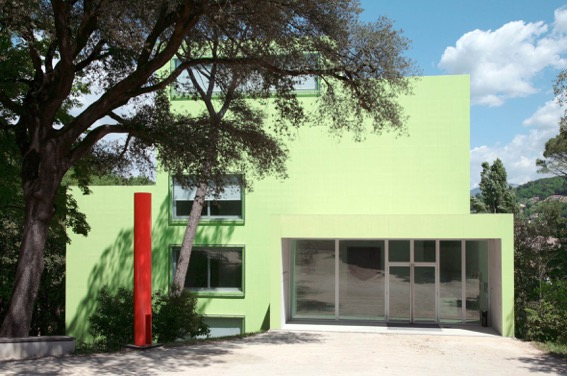EAC – Espace de l’Art Concret: a National Treasure

The Albers-Honegger Donation is a unique collection in France, classified as a National Treasure. It offers the public a collection of more than 700 works representing the multiple trends of geometric abstraction. This richness encourages a permanent dialogue between works from different horizons, between theoretical propositions and specific sociological and political contexts.
The Albers-Honegger Donation brings together works donated to the French State by Gottfried Honegger and Sybil Albers, to which were added the donations of Aurelie Nemours, Gilbert Brownstone, EMMANUEL and several other artists. The ensemble is listed on the inventory of the National Centre for Fine Arts and deposited at the Espace de l'Art Concret.
While the heart of the collection was built around the great names of Swiss (Max Bill, Richard-Paul Lohse, Camille Graeser, Gottfried Honegger) and French (Bernard Aubertin, Jean-François Dubreuil, François Morellet, Aurelie Nemours) concrete art, collectors have been able to place this collection in the long history of European abstract art since 1900. Concrete art was already in its infancy in the early years of the 20th century, as illustrated by the works of Augusto Giacometti (1905), Georges Vantongerloo (1921) and those of Sonia Delaunay (1925-1929) and Frantisek Kupka (1932-1933). Faithful to the spirit of universalism of concrete art, collectors have not confined their collection to a declination of purely geometric works. They have opened up the scope of their collection by reflecting on the most striking, sometimes surprising, extensions that the 20th century has produced, making their collection a work in its own right.
While it seems obvious today that the main actors of minimalism and conceptual art are represented in the permanent collection (with Joseph Beuys, Daniel Buren, Alan Charlton, Richard Long, Helmut Federle, Imi Knoebel, Olivier Mosset, Bernar Venet, Franz Erhald Walther for Europe, or Carl Andre, Robert Barry, Dan Flavin, Donald Judd, Joseph Kosuth, Richard Serra for the United States), the presence of artists linked to arte povera (Manzoni), the support-surface movement (Claude Viallat) or the New Realism (Tinguely) appears less obvious. However, it does bear witness to the visionary spirit of the two collectors who chose to explore the rigorous principles of concrete art in the light of the most radical pictorial practices of the second half of the 20th century.
This collection is also the fruit of a history, that of Gottfried Honegger, a Swiss artist who himself set out to conquer the language of geometry in the early 1950s, and of Sybil Albers, his companion. Zurich, Paris and New York are the first steps in this long journey. The encounters and friendships are subtly revealed by reading the collection. The Soup Campbell box signed by Andy Warhol, the works of Sam Francis and Kimber Smith recall Gottfried Honegger's unfailing ties with the United States. The works of César and Yves Klein testify to the special relationship with France.
(Source: Extrait de www.espacedelartconcret.fr)